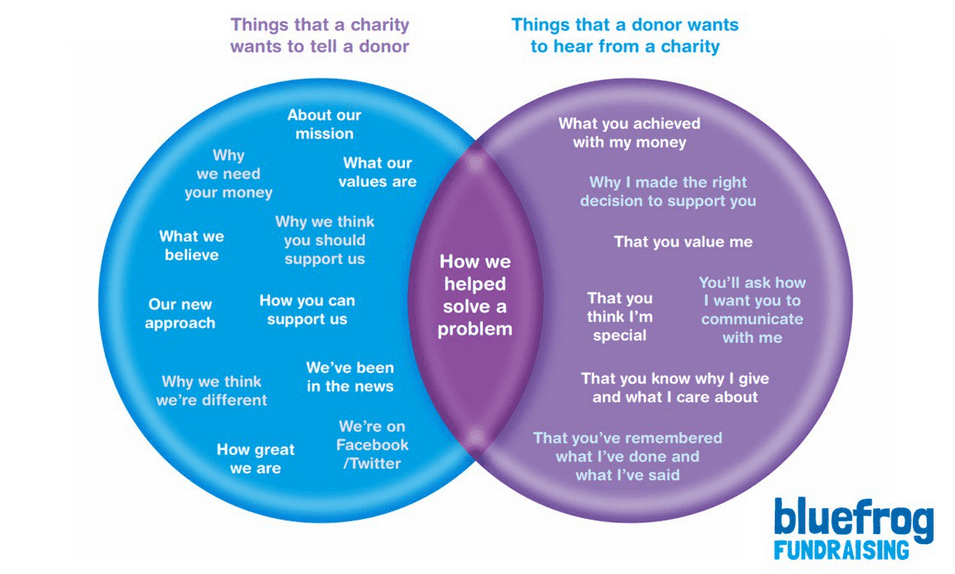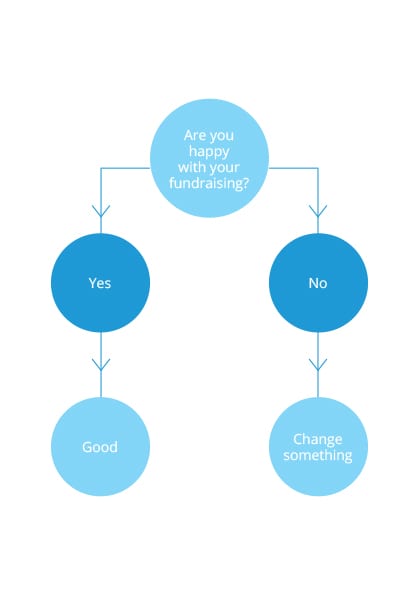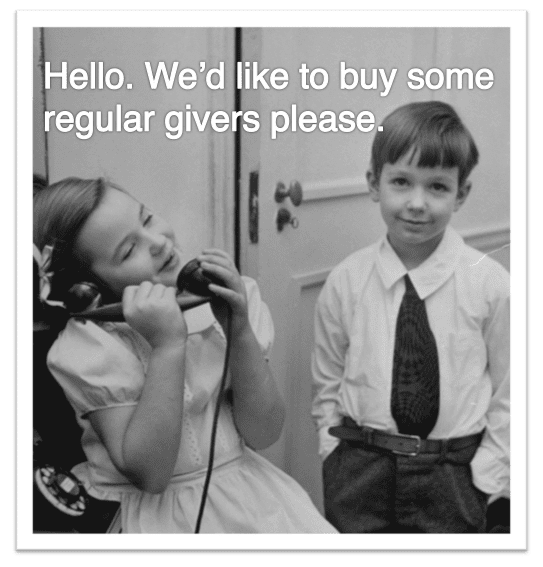Where is the value in subscription box fundraising?
Over the last few years, there's been a huge growth in commercial subscription box schemes.
Most work in the same way. For a monthly payment you get a box of sample products that you might like – make-up, artistic prints, coffees, sweets, beers, clothes, snacks, fruit – or things that might regularly need replacing such as razor blades, cleaning products or socks – delivered to your door. Often at a cost lower than if you bought everything individually.
Food & drink (such as HelloFresh or Abel and Cole) followed by health & beauty (Birchbox and Harry's) are the most popular product categories. But there are loads more weird and wonderful subscription offers out there.
The Royal Mail have produced a very detailed study on the market in the UK backed up with their own market research. You'll see that in 2017, the subscription economy was worth almost £600 million in the UK and is projected to grow to £1 billion by 2022. Key findings include:
- Popularity of subscription boxes is highest amongst under 35s.
- Almost a third of subscriptions are bought as a gift.
- Most important drivers to subscribe were novelty and the desire for a treat.
- Almost 60% of subscribers have cancelled a subscription within the first three months.
- Almost 60% of businesses offering subscription services retain customers for an average of three months or less.
- Shoppers in the 45+ age group are most resistant to subscription boxes.
Note: If you are in the US, you should read this from Hitwise and this from McKinsey. Try this article for details of the Australian market and this and this could be useful for Canadians.
And now charities are launching their own subscription boxes. You can read about some examples here and here but more appear to be arriving every month.
Open up a charity subscription box and what you usually find (in return for your monthly payment of £7 or £8 a month) is some creatively packaged information, advice or activity suggestions related to the work of the charity.
In other words, it appears that many of these products appear to be drip feeding information or advice in return for regular payments – rather than raising money in the traditional sense – which is obviously a pretty big strategic step for a charity to take. Particularly when we consider that most charities have historically provided general information and advice free of charge.
But some of the numbers that have been shared suggest that it might be working. One charity (Scope) reports regular giving retention levels 9 times better than that achieved through traditional fundraising techniques. Couple that with recruitment costs that are 75% lower and a break even in 'half the time' delivered by the previous approach and it's a pretty persuasive argument for jumping on board (note: an update on these results has been published showing income is comparable to face to face income over five years. Details can be found at the end of this post.).
But put a spreadsheet together and start modelling these numbers and you might come to the conclusion that the previous approach must have been struggling. And that leaves you wondering about just how good this technique actually is. Then you need to know what scale has been achieved over what time. It's all well and good to recruit a small number of subscribers through Facebook, but if a product doesn't recruit significant numbers it may never cover its development costs.
And as you might imagine from the Royal Mail stats, the issue with any subscription product is how you keep subscribers subscribing. Once you have started, you need to develop a new box of stuff to send every month. This is going to be expensive - particularly if your numbers are small.
Some charities appear to be time limiting their subscriptions with the current set of boxes only lasting for a year's worth of deliveries. Perhaps it is planned that subscribers will become increasingly engaged with the charity and are happy to continue the monthly payment as a donation. As these products are so new, I have no idea if this is the strategy or if it is working, but if someone is buying something, I'm not sure that stopping a service and thereby removing the value that drove the initial sign up is a good way to boost satisfaction and keep attrition low.
There is at least one charity reporting the high attrition identified by the Royal Mail paper with their particular subscription box. A strategy is being developed to tackle this and it will be interesting to see what they come up with and how their model is adapted.
Evidence elsewhere also highlights the importance of maintaining value. A group of Mumsnet users have shared their thoughts on Scope's Mindful Monsters on their forum (after they received three boxes free of charge). You can read about what they thought here.
As you'll see, many users liked the idea but, as mentioned earlier, they often saw the payment as a purchase rather than a gift to a charity. And that led to a questioning of value for money...
"I don't know anyone who would pay this much, especially when you could get two magazines with more activities, colouring, stickers and brand recognition."
But other people in the sample thought they were great...
"It's been very positive for us, I have already recommended it to a few friends. I also think we will sign up."
As with any offer, it may well work for some people but fail for others. I've got some real concerns about what this new iteration of the "value exchange" model will deliver anything worthwhile.
This point is fundamental. The difference between success and failure is going to depend on how much value the subscriber receives from their box over the long-term and how that translates into engagement. No long-term value is always going to result in high attrition.
The Fairtrade Foundation have harnessed value with their subscription box. Their Live Fair offer puts donors in touch with the farmers who are producing the food, drink and other products they buy, showing them just how their behaviour is making the world a fairer place AND it also offers them samples of Fairtrade products that they might like to try. Fairtrade has used their unique position, working between the charity and commercial space and given buyers the chance to go the extra mile to support the organisation to continue its grassroots cause.
So if you are considering developing your own subscription service, it might be worth asking yourself the following questions before investing too much time and money.
Why are you considering entering this market?
Are you struggling with traditional fundraising and feel some innovation might deliver a better return? If you are, it might be that you need to focus on why people are not engaging with your charity rather than move to the sale of a service instead.
Where is your value?
Do you have a skill or a service that you feel people will happily pay for that you don't deliver as part of your normal day to day service? How can you package this? The Fairtrade example is just one method, Can you come up with others?
How will your subscription service operate?
Are you planning on monthly deliveries or quarterly and for how long? How much will it cost to service your subscriptions? If you are delivering advice and information can you do this digitally, perhaps through an app rather than through postal deliveries.
Who will subscribe?
Evidence to date would suggest traditional older donors may not engage with subscription services. Try to identify who your target audience will be and give real time to understanding if they have a subscription need that your charity can fill.
How will you build engagement and maintain value?
Give thought to how you will measure engagement and how you can build it. Attrition is a key measure, but look at surveys to judge satisfaction and consider building secondary actions into your programme where your supporters have an opportunity to do something non-financial for your charity. And above all, if your offer is time-limited, work out how you are going to move subscribers to committed supporters - particularly if they are predominantly aged under 50.
If you'd like to chat about subscription services in a little more detail, Bluefrog (as well as developing the Fair Trade subscription box) has spent a huge amount of time looking at the sector and the business case behind the model. We would be happy to take you through what we've found to help you decide if it is something that might work for you. Or perhaps help you decide whether you should innovate elsewhere. Feel free to get in touch.
Update February 2020: Details on results of the Scope programme have been published by Third Sector
"...the original subscription boxes have brought in £1.5m, and the charity estimates that over their first five years they will yield returns on investment "comparable to face-to-face fundraising".
Tags In
Related Posts
3 Comments
Comments are closed.
The Essentials

Crack the Code to Regular Giving: Insights, Strategies, and a Special Giveaway!

‘Tis Halloween. Keep to the light and beware the Four Fundraisers of the Apocalypse!

Why do people give? The Donor Participation Project with Louis Diez.

A guide to fundraising on the back of a postcard

What does the latest research tell us about the state of fundraising?










[…] I’m a big fan of subscription boxes. Bark Box, Sun Basket, Glossybox, Fit, Fab, Fun. I think I’ve tried them all! But have you ever considered subscription boxes for fundraising? Mark Phillips asks Where is the value in subscription box fundraising? […]
[…] Where is the value in subscription box fundraising – Mark Philips […]
[…] Where is the value in subscription box fundraising? […]